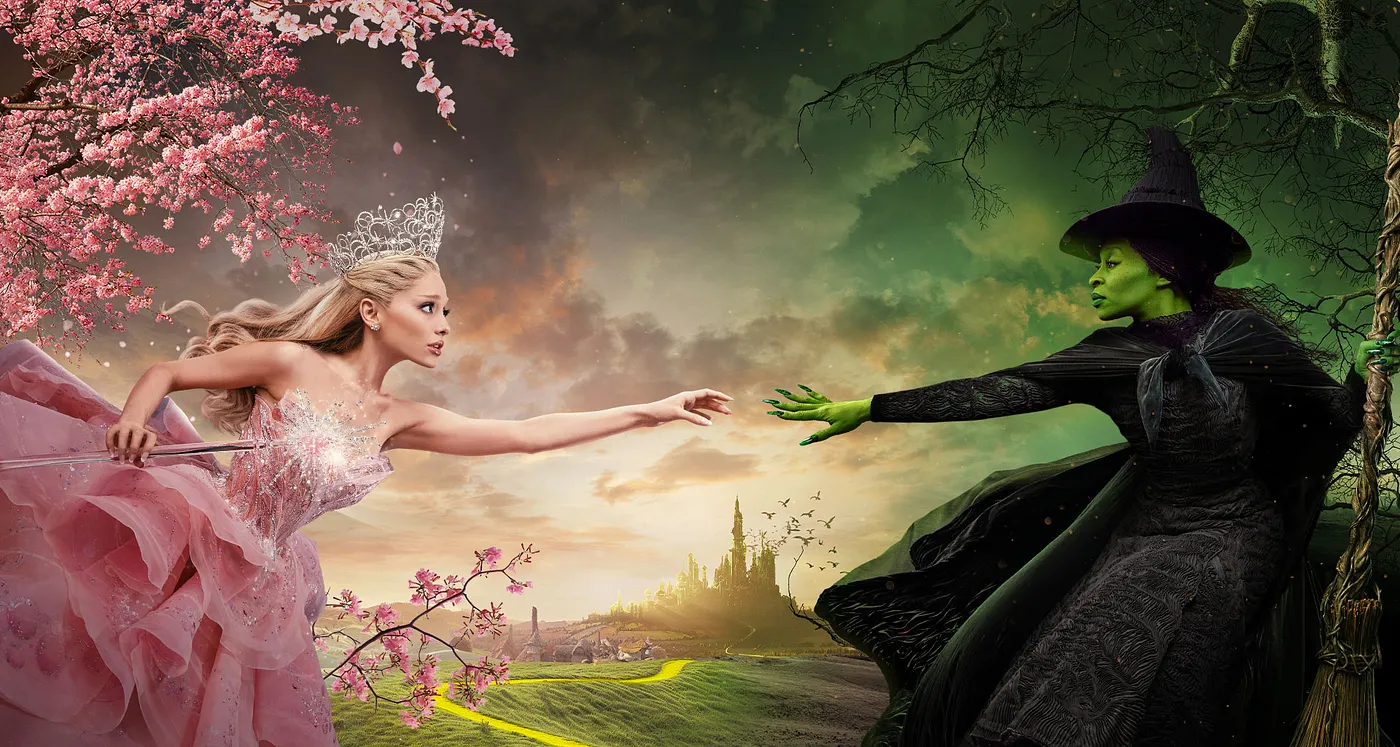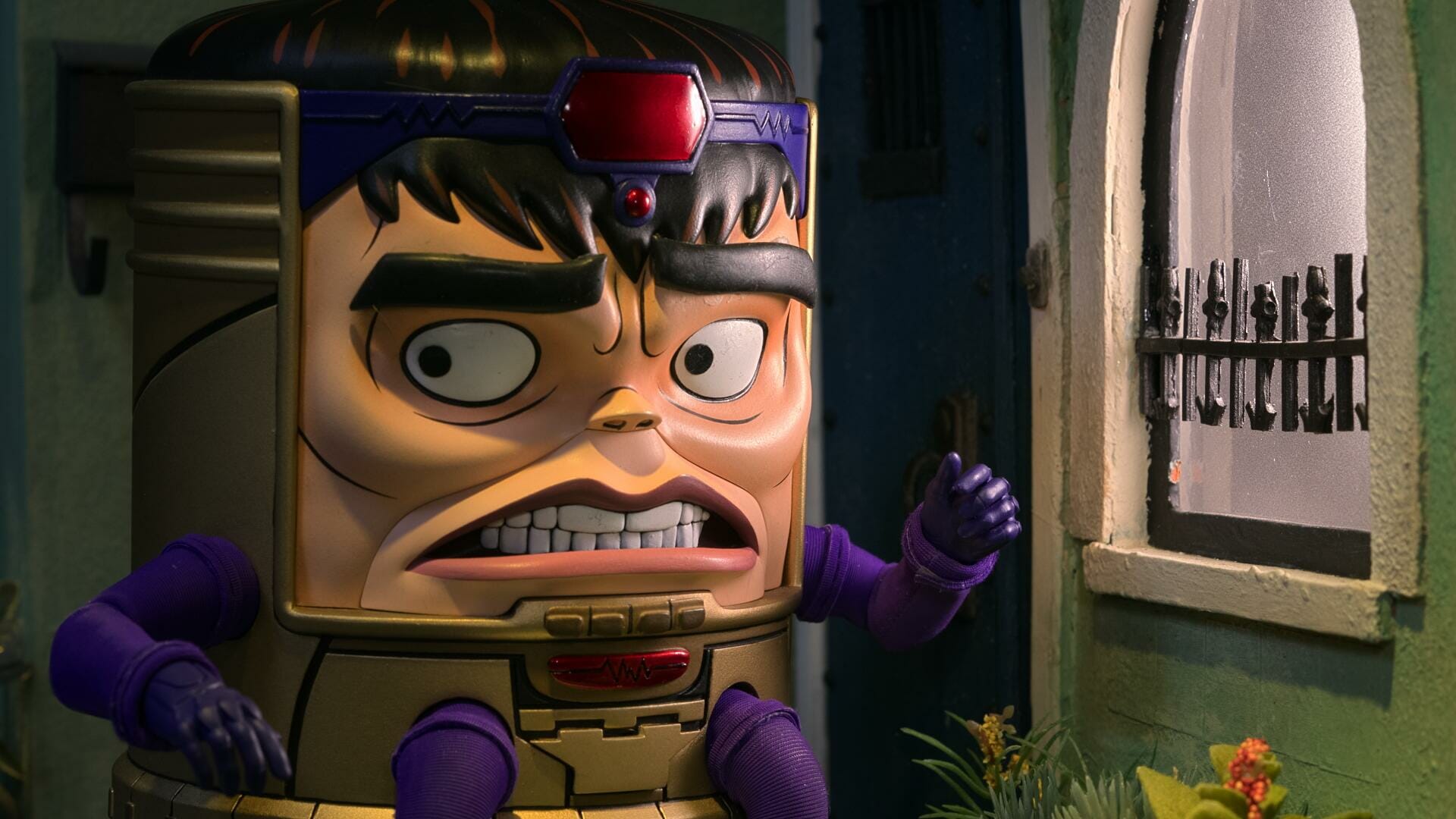
The film adaptation of the Broadway musical Wicked premiered on November 22, 2024, marking a significant milestone for musical theater and fantasy cinema. Directed by Jon M. Chu, this release represents the first part of a two-part adaptation of the 2003 musical, which itself is based on Gregory Maguire’s 1995 novel Wicked: The Life and Times of the Wicked Witch of the West. The film delves into the backstory of The Wizard of Oz, centering on the relationship between Elphaba, the future Wicked Witch of the West, and Glinda, the Good Witch of the South. As they navigate their years at Shiz University and their later roles in the Land of Oz, their contrasting personalities and evolving rivalry drive the narrative, exploring themes of friendship, prejudice, and identity.
Cynthia Erivo and Ariana Grande lead the cast, bringing depth to their characters’ complex journeys. The film shifts between iconic locations, from the wealthy Emerald City to the somber forests of Oz, creating a visual experience combining grandeur and emotional resonance. Chu, known for his work on Crazy Rich Asians, brings cinematic flair to the project, translating the musical’s theatrical scale into a visually captivating experience.
Fashion as Storytelling
In Wicked, fashion is a transformative tool pivotal in character development. The characters’ wardrobes evolve in sync with their transformations. Elphaba’s green skin and dark, minimalist clothing symbolize her isolation and rebellion, gradually transitioning to more gothic styles as she gains power. Fabrics like velvet and leather underscore her emerging strength and resilience. In contrast, Glinda’s costumes, characterized by bright, ethereal gowns adorned with gold and crystal embellishments, reinforce her public image and desire for perfection. Soft materials like silk and tulle evoke a fairy-tale quality and modern sophistication, inspiring a sense of wonder and intrigue.
Supporting characters also wear costumes that reflect their roles and personalities. Madame Morrible, for example, is draped in opulent capes, while Fiyero’s practical yet stylish outfits suggest his complex character. These designs are informed by both historical and contemporary fashion, creating a distinctive atmosphere that enhances the world of Oz.
Symbolism in Costume Design
Each costume in Wicked carries symbolic weight. Elphaba’s wardrobe frequently features shades of green, which connect her to nature and highlight her inner strength. The layering of fabrics in her outfits mirrors her complexity.
At the same time, Glinda’s pastel dresses and floral embroidery symbolize her desire for approval and her role as a figure of public perfection. Accessories, such as Elphaba’s broom and Glinda’s tiara, further reinforce the characters’ roles and the power dynamics within Oz. The use of metallic fabrics and intricate embroidery enhances the magical quality of the costumes, blurring the line between reality and fantasy.
The Cultural Impact of Fashion in Wicked
The costumes in Wicked are poised to influence fashion trends beyond the film. The musical has already inspired a range of cosplay and fashion collections, but the movie offers new opportunities for design inspiration. Glinda’s radiant gowns could inspire bridal fashion, while Elphaba’s gothic ensembles may appeal to those who embrace bold, nonconformist styles.
By blending classic and contemporary elements, the film’s costumes offer fresh ideas for creators seeking to combine fantasy with modern sensibilities. Ultimately, Wicked demonstrates how costumes can transcend their role in storytelling to become cultural markers, shaping broader fashion trends and making the audience feel part of a cultural phenomenon.
The Designers Behind the Costumes
The film’s costume designer, Paul Tazewell, known for his work on Hamilton and The Wiz Live!, reinterprets the musical’s iconic designs for the screen. Drawing inspiration from the glamour of the 1930s and 1940s, Tazewell infuses modern fantasy elements to create costumes that reflect the characters’ personalities and their evolution. Glinda’s shimmering blue gown evokes the elegance of Grace Kelly, while Elphaba’s gothic outfits incorporate punk influences and structured details, emphasizing her empowerment. Supporting characters, like Madame Morrible, are dressed in regal designs that project authority and mystery.
Tazewell also collaborated with renowned fashion houses, including Christian Louboutin, whose footwear designs play a central role in defining the characters. Louboutin’s designs for the film blend high fashion with fantasy, offering shoes that symbolize each character’s journey. Glinda’s sparkling heels, for example, reflect grace and influence, while Elphaba’s boots are bold, gothic statements of rebellion and strength. The integration of Louboutin’s craftsmanship elevates the film’s costumes, merging fantasy with luxury fashion.
Strategic Marketing Collaborations
A significant marketing campaign, including a series of high-profile brand collaborations, has accompanied the release of Wicked. Partnerships with ALDO, H&M, and Mac Cosmetics have helped translate the world of Oz into tangible, consumer-friendly products. These collaborations have focused on translating the themes of the film—magic, transformation, and duality—into fashion and beauty items.
For example, the Wicked x ALDO collection offers a range of footwear, handbags, and accessories that reflect the contrasting personalities of Elphaba and Glinda. Elphaba’s pieces include edgy, green-tinted boots and bold, structured designs, while Glinda’s collection features crystal-embellished heels and pastel-colored handbags. These designs capture the film’s central conflict and allow fans to connect with the characters through fashion.
Similarly, the Wicked x H&M line introduces clothing inspired by the musical’s visual motifs, blending them with contemporary fashion. Meanwhile, the Wicked x Mac Cosmetics collection brings the film’s vibrant, fantasy-driven aesthetic to the beauty world, offering makeup products that reflect the characters’ distinctive looks.
These cross-industry collaborations are an increasingly important part of film promotion, extending the Wicked experience beyond the theater and the screen. By tapping into audiences’ love for the characters and the film’s themes, these collections allow fans to engage with the world of Oz in new, everyday contexts, further solidifying Wicked‘s cultural impact.









